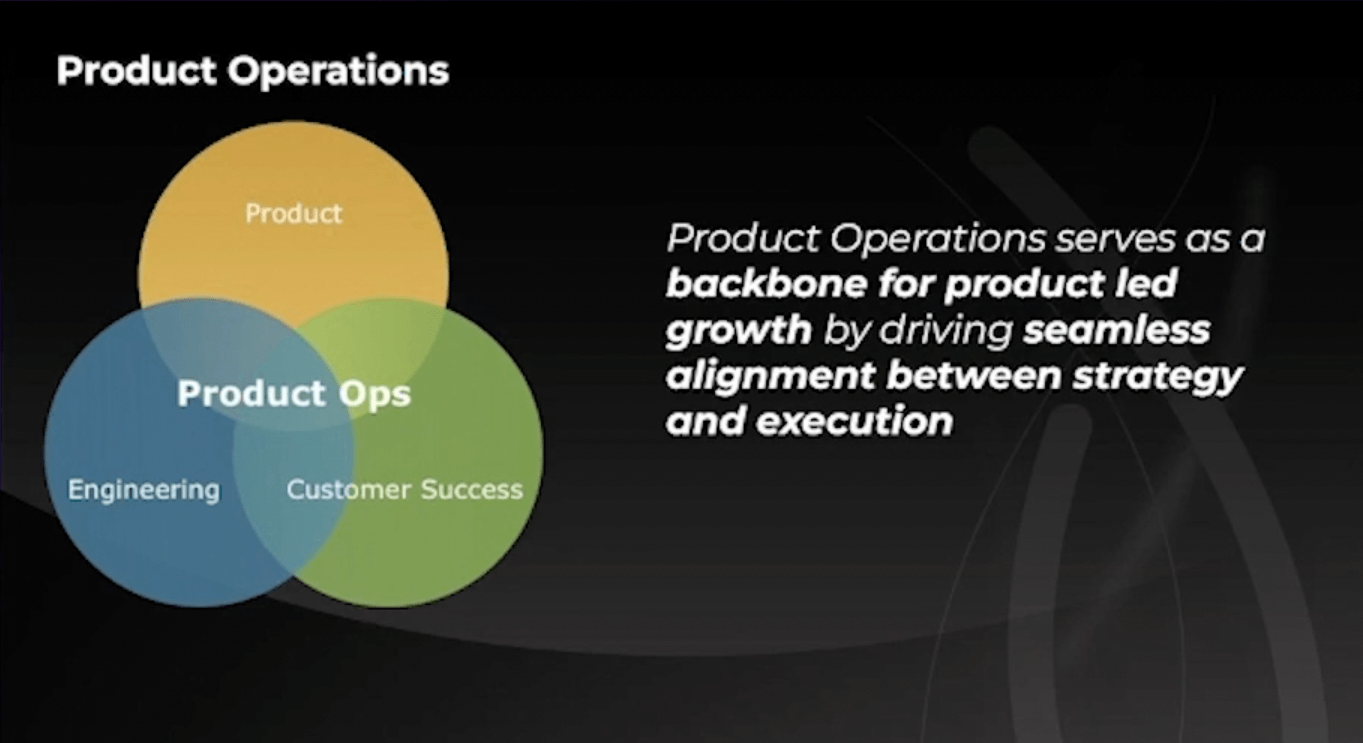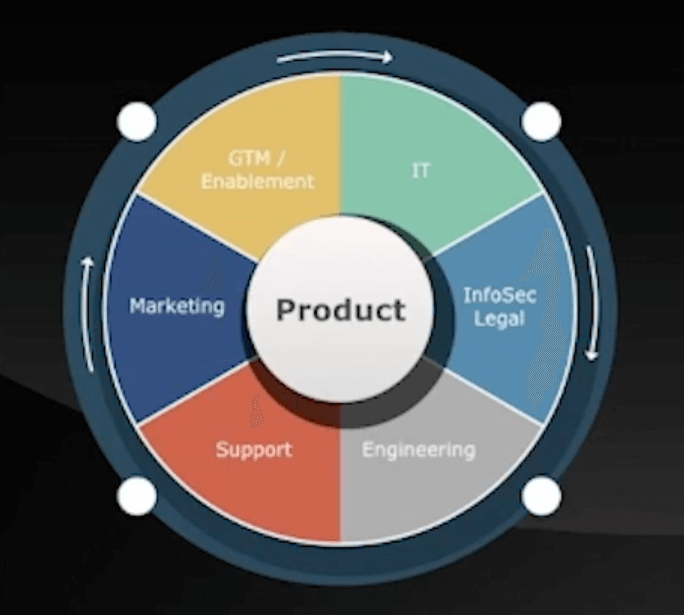Smriti Motwani, VP of Operations, Product & Engineering at Palo Alto Networks, gave this presentation at the Product Operations Summit in San Francisco in 2023.
I’m Smriti Motwani - I have an M.S. in Engineering from Purdue University, and I began my career at a startup called Radiant System. It was a 300-person company, and I spent almost 10 years with them. I did everything from sales, account management, professional services, and consulting, and then moved into engineering to run the PMO.
Then, the company was acquired by NCR. When we sold, Radiany was 1500, and NCR was 35,000.
At NCR, I ran product operations aligned to the chief product officer (CPO). It was a very different scale compared to where I’d come from, and I'll talk a little bit about what we did from a product operations standpoint there.
For the last three years, I've been at Palo Alto Networks. Palo Alto Networks specializes in cybersecurity. So, when you go to the office, log in from home, or log in from a café, Palo Alto Networks makes sure that all your networks are secure, regardless of where you're logging in from. There's a lot more that we do, but simplistically, that’s what we deliver.
I currently run product and engineering operations. Engineering ops is also part of my charter and I’ll talk a little bit about it, but today, I want to spend some time focusing on ops and the importance of the product lifecycle framework in product ops.
I'll be covering:
- How product ops is the backbone for product-led growth.
- What the product lifecycle is and why we need it.
- Cross-functional readiness and the product lifecycle management framework.
- Key milestones of a successful product lifecycle management launch.
- Getting alignment and buy-in from the top down.
Product ops is the backbone for product-led growth
Product lifecycle and especially product ops is a newer role that has evolved over the last few years. I've definitely seen more formality around this role. Previously, you had different types of people playing similar roles.
However, it still isn't consistent. If I were to ask you what one person does in product ops versus what another person does in product ops, you’d see a lot of variation.
Product operations serves as a backbone for product-led growth by driving seamless alignment between strategy and execution.
I’ve put three circles in this diagram below. You could put sales in here, you could put a lot more circles in here. But from my perspective, I think these are the core of what product ops means.

I want to set the stage because when I talk about product lifecycle, it’ll be around this high level of what I think product ops means.
But before I go further, I will say that this is an awesome place to be in terms of product ops. You get to see everything. You get to see all aspects of the product, from the start all the way to the end, as well as the tracking of it. Your hands are in everything.
It's a really fun role, and it opens you up to a lot of things that you want to do. You can decide to go into PMO, or you can decide to go into sales ops, or marketing ops. There are even people who’ve moved into product management. It's a good place to come in and see how things move, and then you can decide if this a place that works for you, or if you want to go into XYZ.
But what happens a lot of time in product ops is that we just end up becoming an ops person. You need to know what you're supporting, and what that product does, and be closer to that.
If you were to ask me how you differentiate between good product ops versus great product ops, great product ops people are able to intelligently talk about what the product is doing and delivering. You get how to get it done, but just make sure you're close to what product does. Be closer to the content of what you deliver.
When you think about product ops, in product, you’d have strategy, your roadmaps, and your financials for your product. So your sales, billing margins, all of that stuff falls under your product.
On the engineering side, you’d have your execution, your customer-found defects, quality, automation, all of those things fall into the engineering bucket.
And then, when we talk about customer success, this is adoption of your product, your first-time fix, how your product’s doing in the market, and your call volume. All of that stuff comes under customer success.
I provide this context because some of this will go into product lifecycle.
What is the product lifecycle and why do we need it?
When we talk about bringing a product to market, when you’re a startup, a 10-person company, founders could sit around the table and say, “Hey, I'm going to bring this product to market. You’ve got to go, you’ve got to go, and you’ve got to go. You're all aligned. Everyone's good to go.” And that’s what happened. It was easy as a startup.
But as the company starts scaling, you need a framework to get the organization to stay aligned. So, as you become a midsize company or a large company, you need some framework because you can't have 50 people at the table. There’s no table for 50 people.
You’ll then say, “Who are the accountable parties who need to come to the table to ensure everything is good?”
One example from when I came to Palo Alto Networks is I talked to around 70 executives, and one of the things that I consistently heard was, “Our products are awesome. We’re doing a great job in the market. But sometimes, the product is so good and so fast in terms of when it’s being released, that the rest of the organization isn't aligned.”
So, support wasn't aware the product was going out, go-to-market/enablement wasn't aware that they needed to enable the field, and marketing wasn't aligned.
That’s what a product lifecycle framework does in some ways. It provides the table where you can bring the various functions, align, and move forward.

So, to talk about product lifecycle more, it basically provides a table. Once you're at the table, it says, ‘What are the critical deliverables that we need to complete on time?’
Cross-functionally, it aligns all of those functions and ensures you're ready for launch together simultaneously.
Ensuring cross-functional readiness through the product lifecycle management framework
Like product ops, there are different versions of a product lifecycle framework. The following is what works for us.


